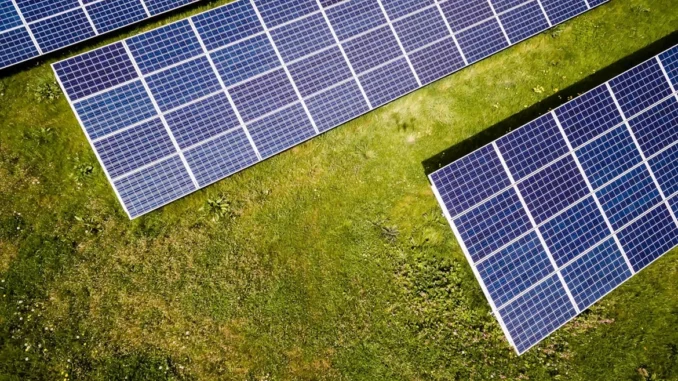
As the UK grapples with a housing shortage and skyrocketing energy bills, the push for integrating green energy solutions in new builds has never been stronger. To delve into this, I spoke with Sarah, a sustainability consultant who has been at the forefront of advising on eco-friendly building practices.
Successful low-energy building design hinges on careful planning. Focus360 Energy can help.
Sarah welcomed me into her office, a bright and inviting space filled with plants and natural light — a perfect setting to discuss sustainable housing. She began by explaining the concept of a building’s SAP score, which stands for Standard Assessment Procedure.
What is a Building’s SAP Score?
“The SAP score is a measure of a building’s energy efficiency,” Sarah explained. “It’s a critical factor for new builds in the UK as it directly affects not only the building’s environmental impact but also the long-term costs for its inhabitants.”
The SAP score considers various elements, including thermal insulation, heating systems, and renewable energy sources like solar panels. Higher scores indicate better energy efficiency, which is increasingly becoming a selling point for new homes.
Ensuring Walls, Roofs, and Floors Are Well-Insulated
One of the primary steps to achieving a high SAP score is to ensure that the building envelope — the walls, roofs, and floors — is well-insulated. “Proper insulation is the foundation of an energy-efficient home,” Sarah emphasised. “It reduces heat loss, thereby lowering the amount of energy required to maintain a comfortable temperature inside.”
She elaborated on the materials and techniques commonly used for insulation. “Modern builds often use a combination of rigid foam boards, fibreglass batts, and even more innovative materials like aerogel. The key is to create a continuous layer of insulation that eliminates thermal bridges — areas where heat can escape.”
Sarah also highlighted the importance of airtight construction. “Minimising air leakage is crucial. Even the best-insulated walls won’t perform well if there are gaps and cracks allowing warm air to escape and cold air to seep in.”
Installing High-Efficiency Boilers or Heat Pumps
Next, we discussed the role of heating systems in achieving a high SAP score. “Traditional boilers have come a long way,” Sarah noted. “High-efficiency condensing boilers are now standard in many new builds, as they can achieve efficiencies of over 90%.”
However, Sarah was quick to point out that the future lies in heat pumps. “Heat pumps are incredibly efficient because they transfer heat rather than generate it. Air-source heat pumps, for example, can achieve efficiencies of 300-400%, meaning they produce three to four times more energy than they consume.”
She recommended combining heat pumps with underfloor heating systems for optimal performance. “Underfloor heating operates at lower temperatures, making it an ideal match for heat pumps. Together, they provide a consistent and efficient heating solution.”
The Role of Solar Panels
When it comes to renewable energy, solar panels are often the first thing that comes to mind. Sarah explained how they fit into the broader picture of energy-efficient new builds. “Solar panels can significantly boost a building’s SAP score by generating electricity on-site, reducing reliance on the grid. This not only cuts energy bills but also lowers the building’s carbon footprint.”
She mentioned that while solar panels are not yet mandatory for all new builds in the UK, they are increasingly being included in planning regulations. “Local authorities are starting to recognise the benefits and are incorporating solar requirements into their planning guidelines. Some even offer incentives for developers who include renewable energy systems in their projects.”
Challenges and Opportunities
Despite the clear benefits, Sarah acknowledged the challenges of integrating solar panels into new builds. “The upfront cost is often a barrier,” she admitted. “While the long-term savings are significant, the initial investment can be a hurdle for developers and buyers alike.”
However, she was optimistic about the future. “As technology advances and prices continue to fall, solar panels will become increasingly accessible. Moreover, government initiatives and subsidies can help offset the costs, making it easier for developers to include them in their projects.”
Looking Ahead
As our conversation drew to a close, Sarah shared her vision for the future of housing in the UK. “We’re at a pivotal moment,” she said. “The need for more homes and the urgency of addressing climate change are pushing us towards a more sustainable model of building.”
She believes that with the right policies and incentives, the integration of solar panels and other green technologies in new builds will become the norm rather than the exception. “It’s not just about meeting regulations or achieving high SAP scores,” she concluded. “It’s about creating homes that are not only energy-efficient but also comfortable, affordable, and sustainable for future generations.”
As I left Sarah’s office, I felt a renewed sense of optimism. The road to widespread adoption of solar panels on new builds may have its challenges, but the benefits are undeniable. With experts like Sarah leading the way, the future of housing in the UK looks bright indeed.
Emily Thompson


Be the first to comment